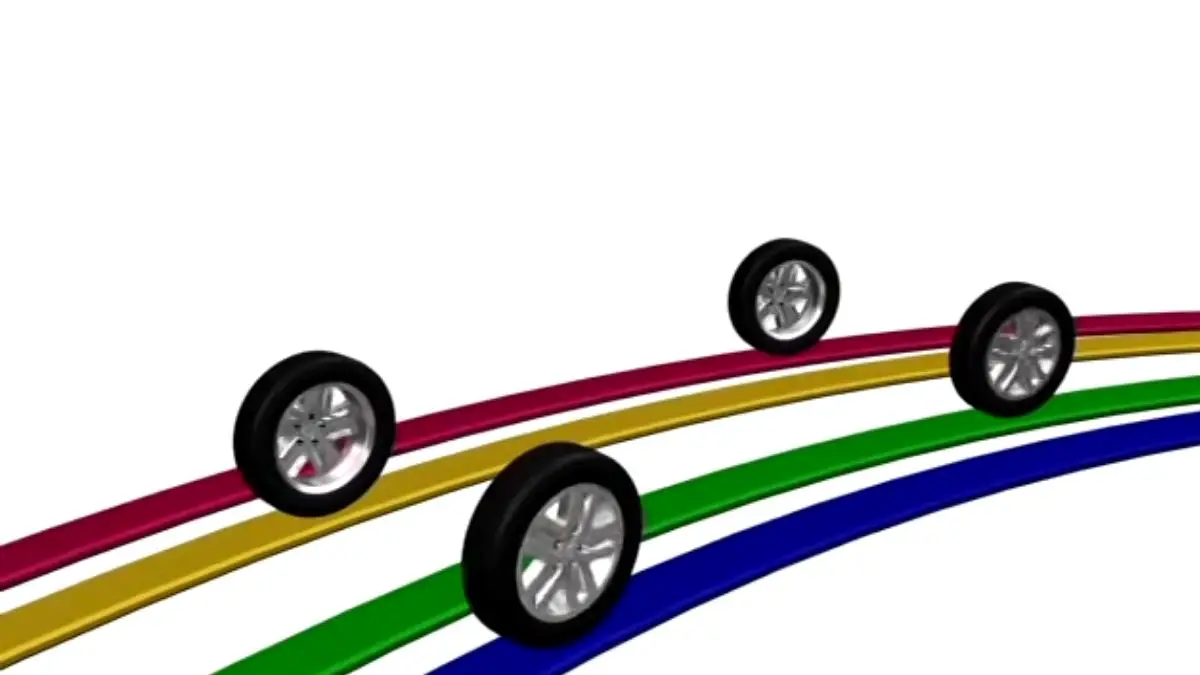Yes, car wheels rotate at different speeds. The rotation of the vehicle’s wheel depends on conditions such as traction, torque applied, the mass of each wheel, and the condition of the road.
When you are turning sharply or traveling over uneven surfaces with a four-wheel drive (4WD or 4×4), all four wheels turn at different speeds. Each wheel needs the power to keep it rotating at a certain speed. If one of the wheels was not powered, it would slow down and eventually stop.
The differential is a mechanical device that allows each side to rotate at different speeds while providing equal torque to both sides. To understand how differentials work, you need to understand the basics of its operation.
Table of Contents
How do car differentials work?
The differential is a set of gears that divides and redirects torque from a single input shaft towards two output shafts. A simple way to understand how differentials work is by looking at an example: a bench vise. In the bench vise, there are two jaws parallel to each other with a screw between them. The screw turns and the jaws tighten against the object being held in place.
In a car, one input shaft from the engine is attached to a differential, which consists of two output shafts rotating in opposite directions. In this case, when you go around a corner, instead of having your right side tires slide away from each other (which would be disastrous), each tire moves at a different speed thus providing traction to keep going through the turn.
What happens if car tires are unable to rotate at different speeds when turning?
If car tires are unable to rotate at different speeds when turning, they will all wear down unevenly.
Many people think that tire rotation is simply moving their tires around to other positions on the car however, this is not entirely true. Tire rotations are done to change the position of the tires relative to each other so that they wear evenly.
For example, since front tires wear down at a much faster rate than rear ones do, rotating them is mainly done to make sure this uneven wearing doesn’t cause the front tires to wear out or be replaced before the rear ones need attention.
How do car wheels rotate?
While most people believe that car wheels rotate around their axis of rotation, this isn’t so. Car wheels actually roll along the ground on their outer circumference while still rotating about their own axes. For example, when you’re driving at 60 km/h (a vehicle’s circumferential speed), your front wheel is doing one rotation every 1.5 seconds while the car’s axles rotate at a much slower rate.
Car wheels can even have different circumferential speeds. If you increase your front wheel diameter, then the circumference of that wheel becomes greater and its circumferential speed decreases. The same is true if you decrease it, then circumferential speed increases (since the circumference becomes smaller).
Does an axle rotate?
Yes, an axle is a rod or shaft that rotates the wheels and supports the weight of your vehicle. It connects to the wheel hubs and turns with them as you drive. There will be one going through each wheel on both sides.
What are the different axles?
There are three main types of axles: front, rear, and stub axles:
- Front axles run from the middle of the front wheel hubs all the way to the center of your vehicle’s frame.
- The back axle runs from one side to another at the rear of your vehicle.
- The axle in the middle is the stub axles, which run from the chassis to both sides of the wheel’s hub.
What are the Pros and Cons of each axle?
Front axles pros- They allow you to steer left or right when turning corners. However, front-axle problems can result in damage to other components like the steering gear.
Rear axle pros- It carries much of your vehicle’s weight. However, this often results in less ground clearance and more chance for problems with driveshafts or suspension damage.
Stub axles pros- They don’t cause as much stress on other components. However, stub-axle problems can result in damage to the chassis, frame, engine, and more.
Conclusion
Car wheels rotate at different speeds depending on the circumference. The larger the wheel, the slower it will turn. Therefore, if you increase your front-wheel diameter, then circumferential speed decreases (since its circumference becomes greater).
These are important considerations for car owners who want to make sure their tires wear evenly and don’t suffer from uneven wearing or premature replacement due to excessive pressure in one area of a tire relative to another.
Reference
- How Differentials Work – https://auto.howstuffworks.com/differential.htm


